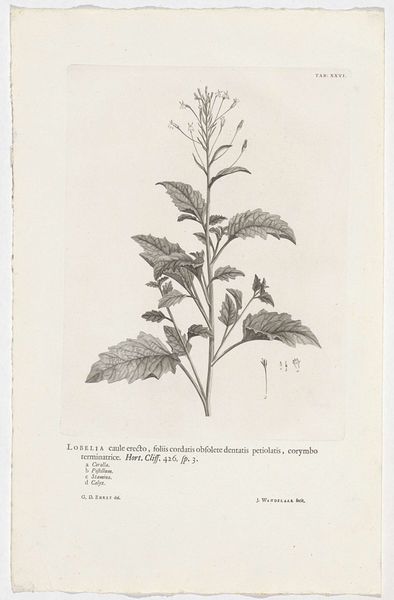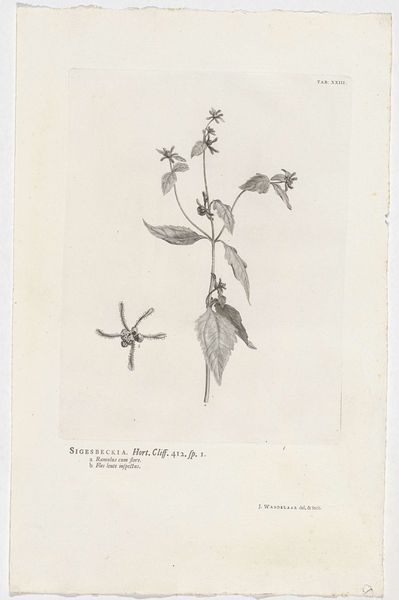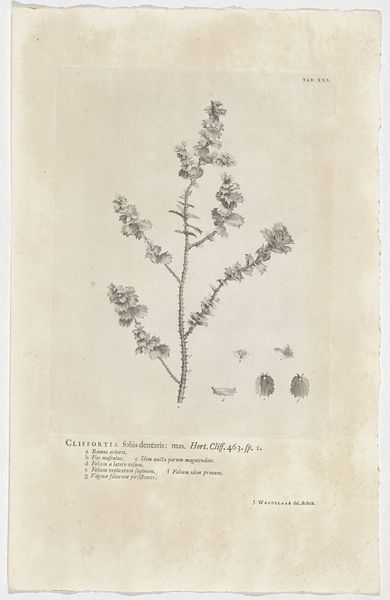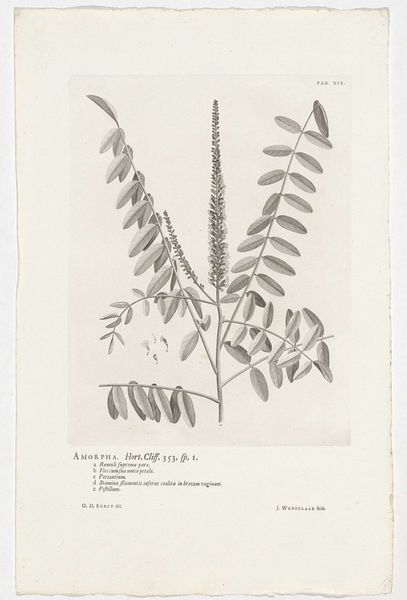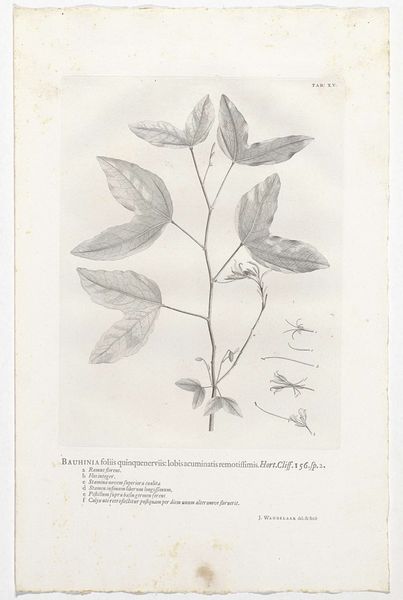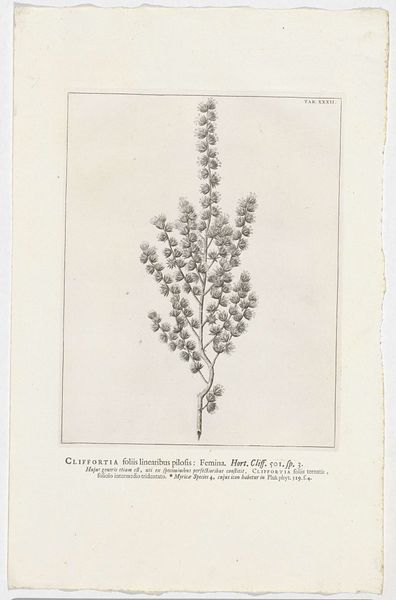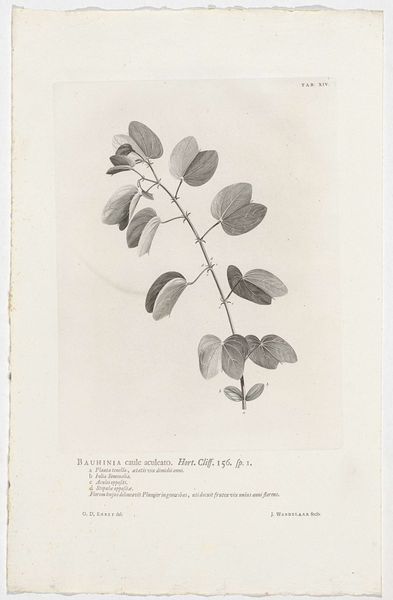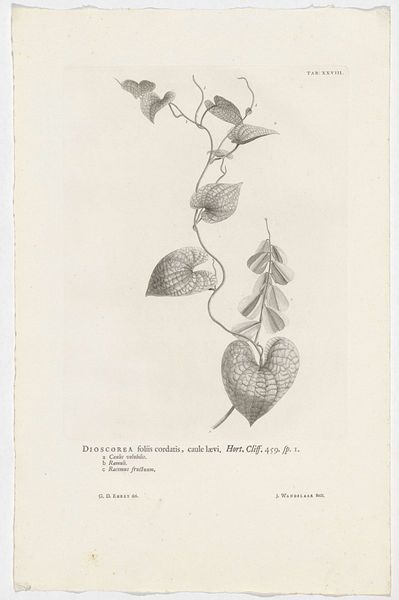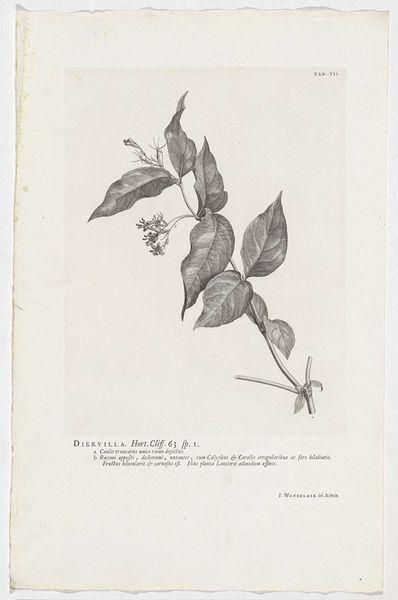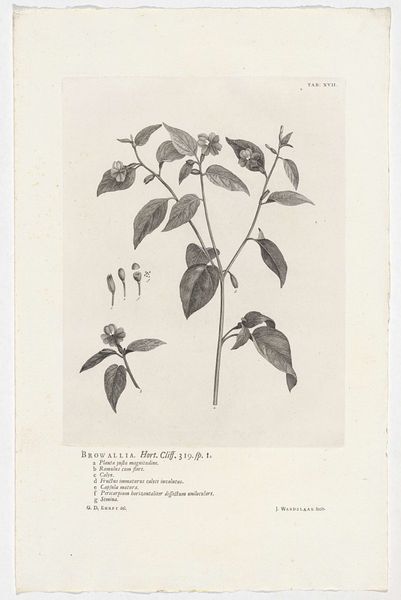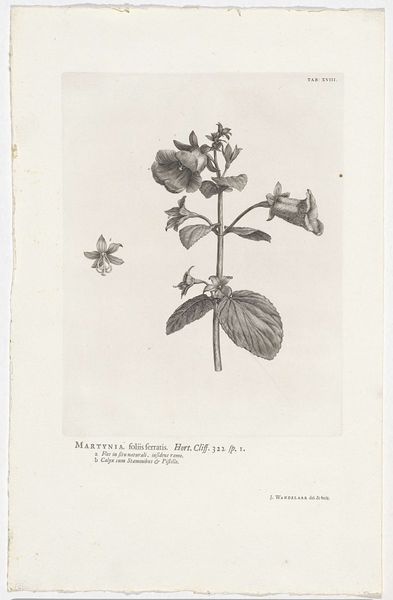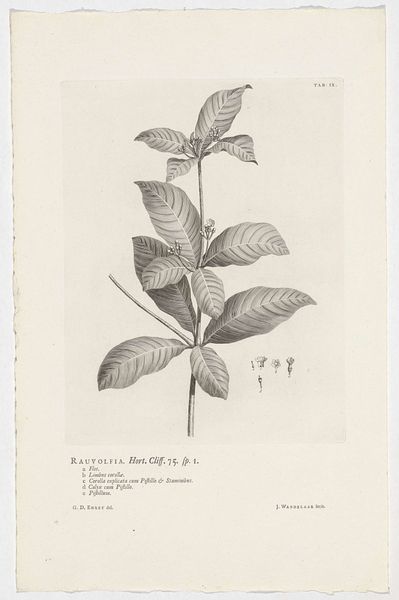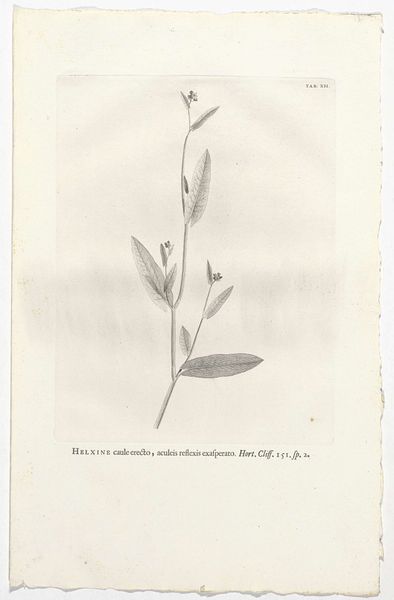
drawing, print, etching, paper
#
drawing
#
baroque
# print
#
etching
#
old engraving style
#
paper
#
plant
Dimensions: height 281 mm, width 219 mm
Copyright: Rijks Museum: Open Domain
Editor: We're looking at "Cassia nictitans," a drawing and etching on paper from 1738 by Jan Wandelaar, housed at the Rijksmuseum. It has such a detailed, almost clinical quality... what can you tell me about the plant as an image? Curator: Well, the image itself exists within a fascinating intersection. Botanicals like this became symbolic gestures towards mastery over the natural world during that period, linking scientific understanding with aesthetic appreciation. But the deeper symbolism lies perhaps in *how* it’s rendered. Consider the crispness of line, the scientific naming right on the sheet… doesn’t this speak to something beyond pure observation? Editor: I think so. It reminds me of something you'd find in an early encyclopedia, this idea of collecting knowledge. Is there more to it beyond that? Curator: Exactly! What emotions arise for you? Are there specific aspects, forms or arrangements, that spark a sense of tension, perhaps a curiosity around life, fragility, or a deeper, more hidden ecosystem? Look closely. How is our plant being presented as both subject, specimen, *and* symbol? Editor: I see what you mean. The careful, almost reverent depiction does lend it a kind of iconic status, a stand-in for larger ideas about knowledge and nature's order. Curator: Indeed. And understanding these historical undercurrents helps us decode the symbolic power embedded in what might seem, at first glance, a simple botanical study. How do you think that impacts the legacy of images such as these? Editor: Thinking about the weight these kinds of images carry is something new to me, and has really transformed how I think about not just images, but about the memory and meaning behind images of this time. Thanks so much. Curator: The pleasure was mine. It’s the layering of meaning, historical context, and individual interpretation that keeps these images alive.
Comments
No comments
Be the first to comment and join the conversation on the ultimate creative platform.
